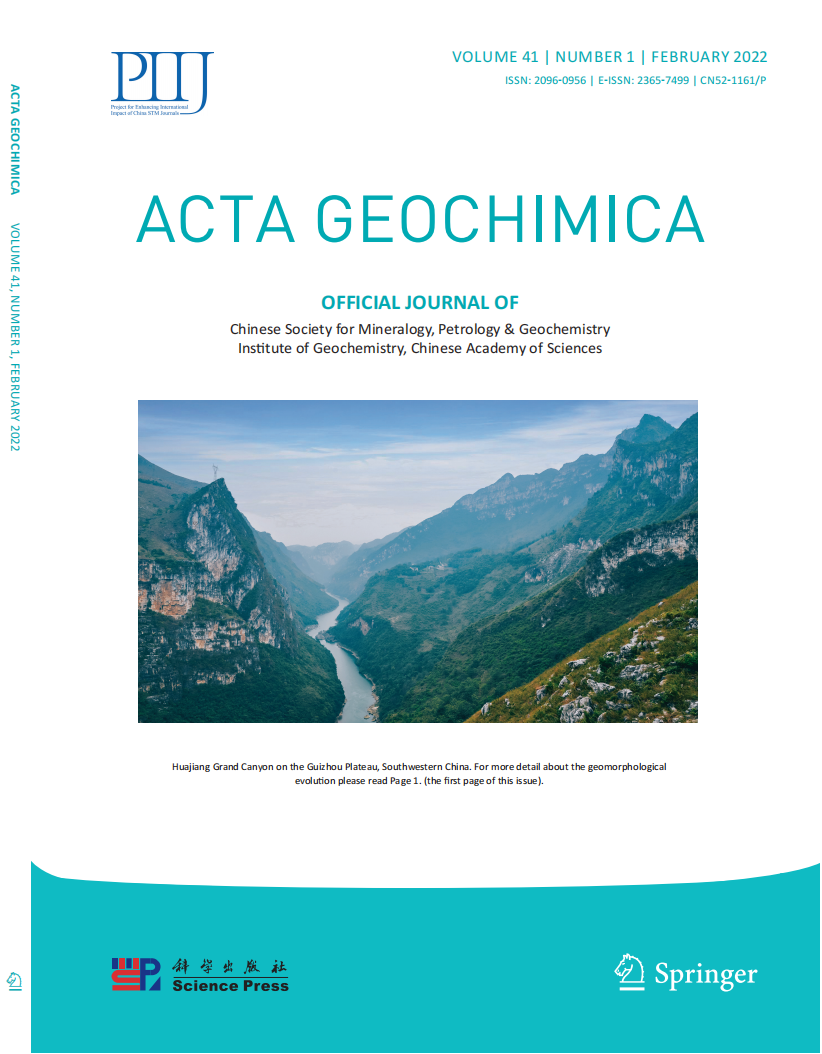- 钛学术文献服务平台 \
- 学术期刊 \
- 基础科学期刊 \
- 化学期刊 \
- 地球化学学报(英文)期刊 \
Variability in distribution of major and trace elements in Lower Eocene siliceous sections of the Tr
Variability in distribution of major and trace elements in Lower Eocene siliceous sections of the Tr
原文服务方:
地球化学学报(英文)
摘要:
This paper presents lithologic and geochemical data from the sequence of the Eocene Irbit formation siliceous rocks (Transuralian Region) outcropping in a quarry in the Irbit deposit (thickness of 15 m) and in a large natural outcrop, Belaya Gorka (thickness of 13 m). The data show that both outcrops are composed of diatomites and clayey diatomites, both characterized by a certain degree of lithologic heterogeneity around their chemical, granulometric, and mineralogical compositions; microstructural features; and degree of diatom preservation. The values of indices important for the classification of siliceous rocks and determination of prospects for their industrial application—SiO2, Al2O3, Fe2O3, and clay fraction content—ranged from 66% to 77%, 7% to 14%, 3.00% to 5.60%, and 23% to 50%, respectively. In all studied lithologic varieties, element abundances of V, Cr, Mn, Co, Ni, Cu, Zn, Ga, Ge, and Sb were two to three times higher than their respective abundances in the Earth's crust. This is probably related to these elements' involvement in the biological cycle and favorable conditions for transport. Rb, Cs, Ba, and Sr, as well as rare earth elements, are considered the most reliable indicators of lithologic and geochemical subdivision of a sequence of siliceous rocks, as they are associated mainly with clayey minerals. Variations in these indicators have recorded, with great probability, even short-term cycles and semi-cycles of silica sedimentation in the Transuralian Region, as well as tectonic regime and involvement of terrigenous influx.

推荐文章
Distribution and geochemical significance of trace elements in shale rocks and their residual keroge
Shale
Kerogen
Trace elements
REEs
Variations of trace elements under hydrological conditions in the Min River, Eastern Tibetan Plateau
Trace elements
Concentration-discharge relationship
Tibetan Plateau
River
Are spatial distributions of major elements in soil influenced by human landscapes?
Major elements
Spatial distribution
Geographical background
Human landscape
Geographic information system
Remote sensing
Rare-earth and trace elements and hydrogen and oxygen isotopic compositions of Cretaceous kaolinitic
Rare-earth and trace elements
Oxygen/hydrogen isotopic composition
Kaolinitic sediments
Lower Benue Trough
Nigeria
内容分析
关键词云
关键词热度
相关文献总数
(/次)
(/年)
文献信息
| 篇名 | Variability in distribution of major and trace elements in Lower Eocene siliceous sections of the Tr | ||
| 来源期刊 | 地球化学学报(英文) | 学科 | |
| 关键词 | Diatomite Clayey diatomite Irbit formation Eocene Geochemical variability | ||
| 年,卷(期) | 2022,(2) | 所属期刊栏目 | |
| 研究方向 | 页码范围 | 262-276 | |
| 页数 | 14页 | 分类号 | |
| 字数 | 语种 | 英文 | |
| DOI | 10.1007/s11631-018-0290-7 | ||
五维指标
版权信息
全文
- 全文.pdf
引文网络
引文网络
二级参考文献 (0)
共引文献 (0)
参考文献 (0)
节点文献
引证文献 (0)
同被引文献 (0)
二级引证文献 (0)
2022(0)
- 参考文献(0)
- 二级参考文献(0)
- 引证文献(0)
- 二级引证文献(0)
研究主题发展历程
节点文献
Diatomite
Clayey diatomite
Irbit formation
Eocene
Geochemical variability
研究起点
研究来源
研究分支
研究去脉
引文网络交叉学科
相关学者/机构
期刊影响力
地球化学学报(英文)
主办单位:
中国科学院地球化学研究所
出版周期:
双月刊
ISSN:
2096-0956
CN:
52-1161/P
开本:
大16开
出版地:
贵州省贵阳市观水路46号地球化学研究所
邮发代号:
创刊时间:
1982-01-03
语种:
英文
出版文献量(篇)
0
总下载数(次)
0
总被引数(次)
0
期刊文献
相关文献
推荐文献

 免费查重
免费查重










